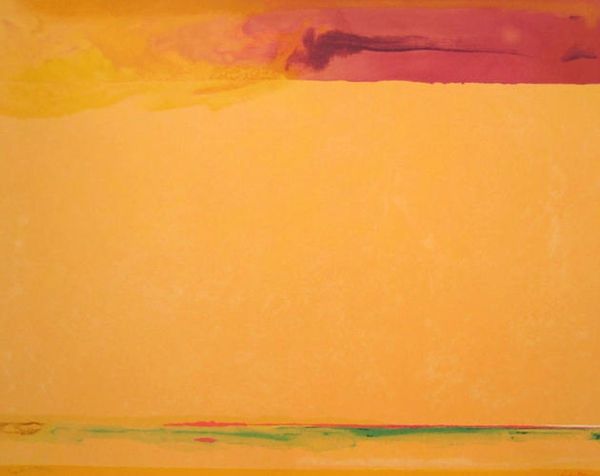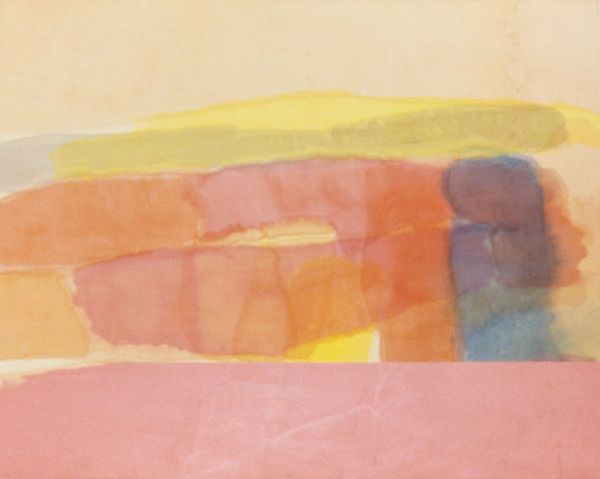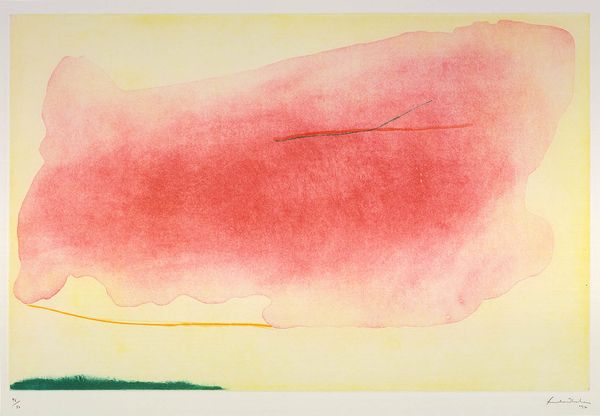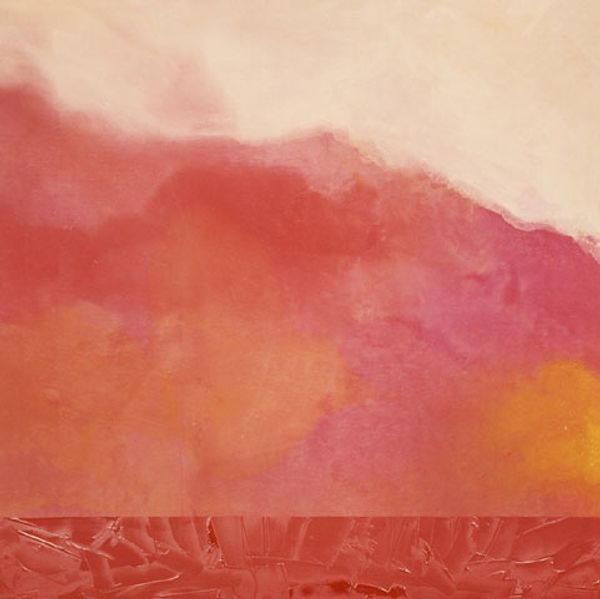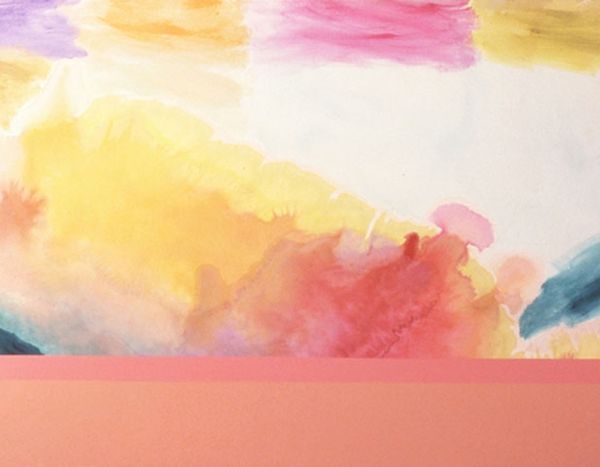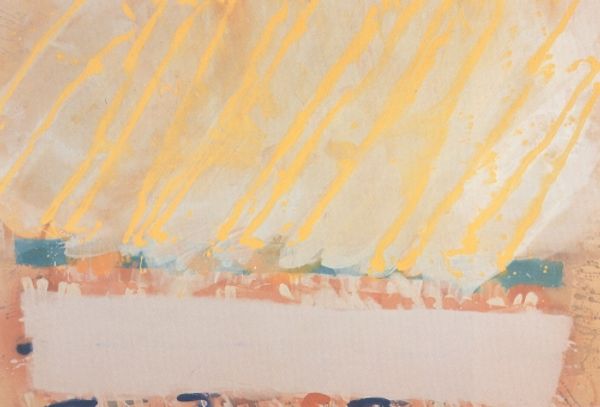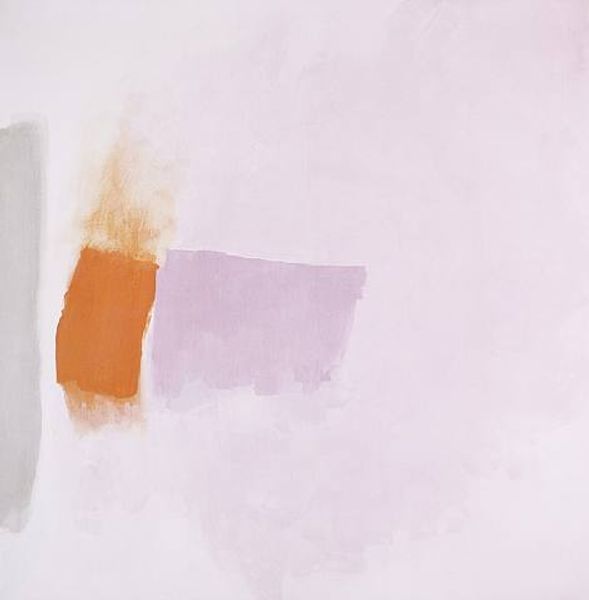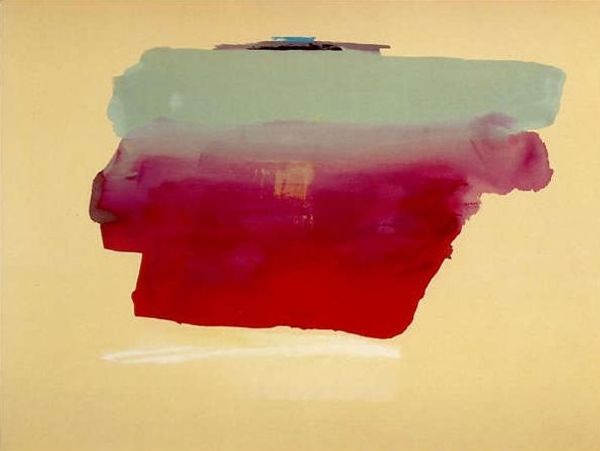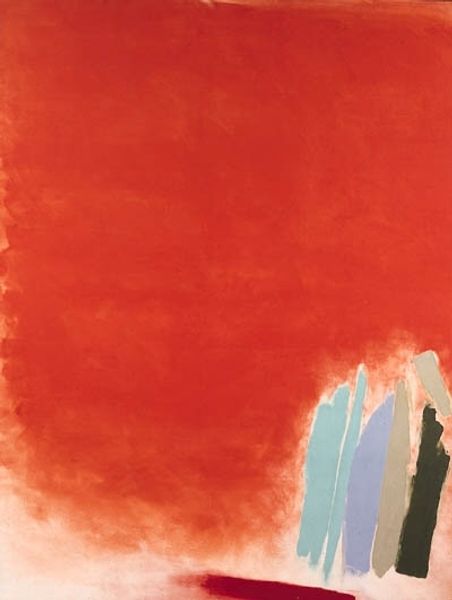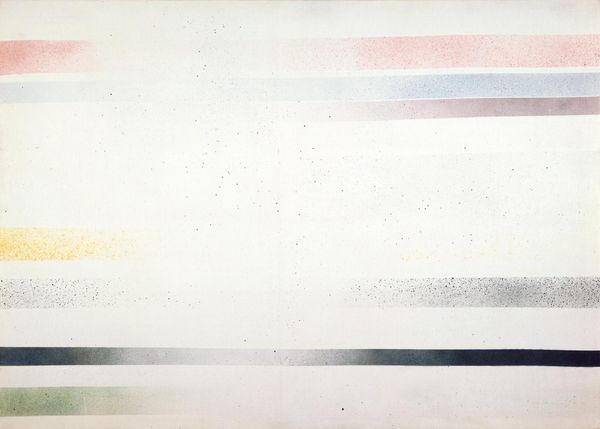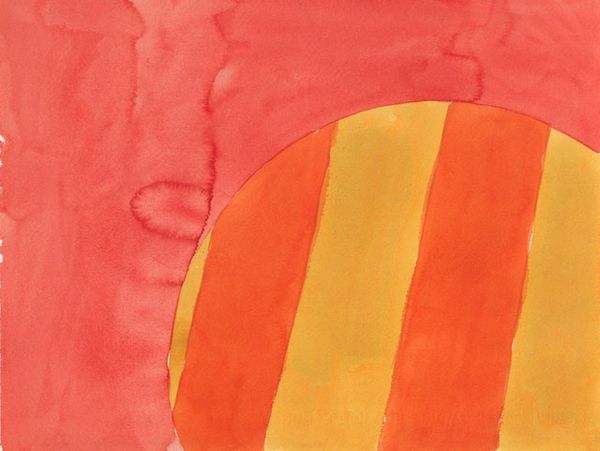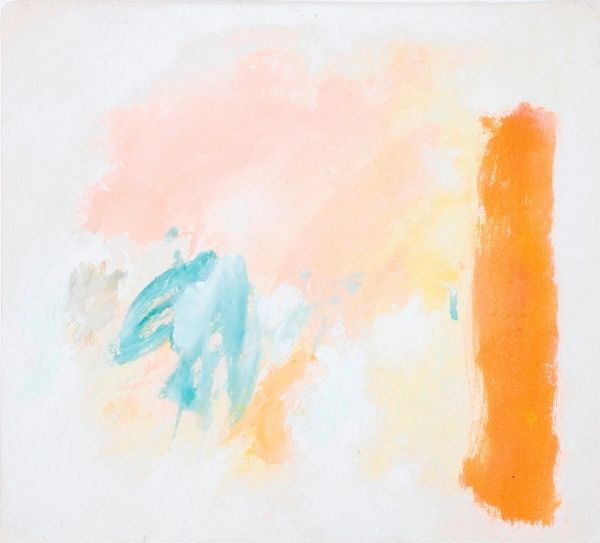
Copyright: Helen Frankenthaler,Fair Use
Curator: Looking at Helen Frankenthaler's "Black-Eyed Susan" from 1988, it’s hard to ignore the feeling of spaciousness that this acrylic painting evokes. What's your immediate impression? Editor: Light. Almost ethereally so. The layering of washes—pink melding into the bright yellow—creates an atmospheric perspective that suggests an expansive landscape. Curator: Frankenthaler, notably connected to color field painting, abandoned brushes at times. Here, we see washes and staining techniques allowing the paint to soak directly into the canvas, blurring boundaries and solidifying the flatness of the picture plane. Editor: Flatness is key, but within that, Frankenthaler initiates dialogue regarding landscape. It's fascinating considering abstract expressionism’s trajectory, particularly how her work intersected with second-generation artists navigating post-war visual culture. Abstraction became almost democratized and extremely relevant within larger socio-political contexts. Curator: Exactly. Take for example the dynamic tension between form and formlessness created by the translucent layering and opacity near the top and right edges, which leads one to feel an underlying structure fighting with the looseness of gesture. How does the materiality of acrylic here help deliver Frankenthaler's idea? Editor: Acrylic's fast-drying quality and adaptability allowed her to build up layers quickly. The visible brushstrokes and staining are intentional records, perhaps testaments to individualism even amid institutional trends. Curator: Consider the work's title juxtaposed with its presentation. We understand black-eyed Susans to be rather ordinary daisies with simple forms and striking black centers, yet Frankenthaler has captured this common beauty through extraordinary formalism. Editor: Yes, and if Frankenthaler were trying to represent a botanical object precisely, she may not have captured what the essence of nature does for the collective social imagination. Her approach reminds the observer to consider art as active agent of transformation rather than passive decoration. Curator: Considering those color interactions and compositional dynamics makes for a truly rich interpretation. Editor: Yes, looking at art in light of our cultural experiences can be a really helpful exercise, and thanks to abstraction and unique artistic processes, viewers come that much closer to a sense of possibility.
Comments
No comments
Be the first to comment and join the conversation on the ultimate creative platform.
